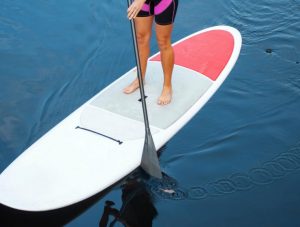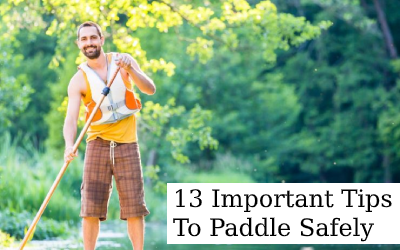Another of the most rising watersports is stand-up paddleboarding (SUP). SUPing is a perfect way to have fun on the water and get comfortable whether it’s on an inflatable paddleboard or sturdy one. Repeat this often enough, and you can improve your overall health, particularly your core strength in the body, which is where most of your paddle power comes from. Whether you’re a true paddleboarding novice or more seasoned, learning a few tips and tricks is always helpful in enhancing your SUP experience.

- Take a friend along; its always fun to paddle in a company and they can also help you when in need. This ensures both safety and fun.
- When you head out alone, please tell someone where you are going and when you’re coming back. Should not leave the house without a cell phone or a device for contact.
- Always carry a waterproof case for your smartphone. This way, you can use it to capture the whol experience while keeping it safe from getting wet. That way you can use it even in cases of emergencies.
- As a novice paddler, you must always avoid offshore winds. They can drag you far into the see and making it back to the shore can be a tiring task even for the experts.
- Always keep a check on the weather forecast and tide times before setting off. If the water is too choppy, it may be challenging for you, particularly if you’re a novice. And be mindful that circumstances will rapidly change.
- Always engage your core. This is like one of the most basic tip that can be given. Engaging the core can help you paddle more efficiently as majority of the work is supposed to be done by the core. This also reduces load from your shoulder joints which is always better.
- As a beginner, sometimes it is difficult to hold your head up and look straight ahead of you because it’s more normal to look down (probably because you’re concerned about falling into the water). But the point is, standing straight is extremely necessary when paddle boarding, because it allows you to achieve optimum stability. And if you look down at your hands, your head is clearly going to be looking at the wrong place.
- Always make sure that you are suitably dressed for the time of year. It is highly advisable to wear a wet or drysuit during winters. You can rock a swimsuit during summers but if going for longer excursions make sure to carry something that keeps you warm.
- You should wear an appropriate personal flotation tool. It may be a lifejacket or an assist to buoyancy. Pick one that also lets you jump a lot so you can swim easily. This will not only keep you alive but will also allow you to survive should you sink in – as you’re sure to!
- Always choose the right gear as per your experience levels. If a novice, you should always go for boards which are thicker and wider, making them stable to handle. Also, choose the right paddle for your height so as to minimize fatigue.
- Do not skip training. Paddling is not as easy as buying a board and heading out. Its always the right choice to practice under supervision first, and then head out to improve your skills.
- You should also use a leashed paddleboard. There is nothing more frustrating than having to swim when you slip off from your paddleboard. The rope will also help you stay attached to the board if you get in trouble and let you float.
- When you’re launching a lifeguard beach, make sure you get going and get back between the black and white checkered flags. There will be less swimmers in that same area , allowing you more space to maneuver. Remember other users of water by learning the right – of – way in surfing. This will save you and others from being hurt.
